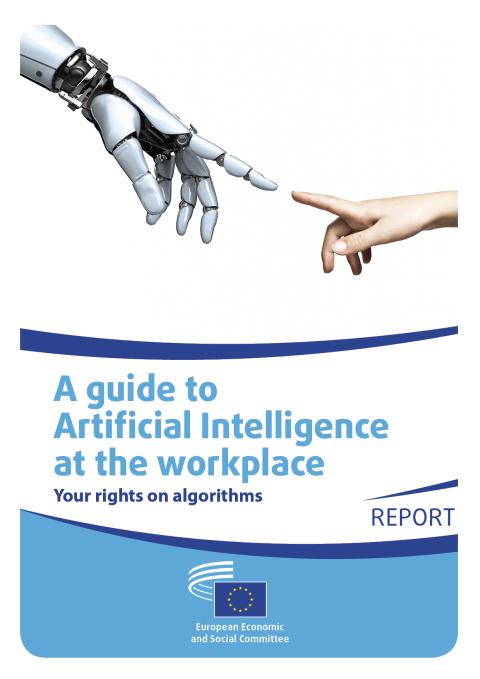European Economic
and Social Committee
A guide to Artificial Intelligence at the workplace
A guide to artificial intelligence (AI) designed by a trade union? Yes! Such a technology is very impactful and with its algorithms, it is breaking into the world of work more and more, bringing together a number of technologies that workers encounter on a daily basis: facial or voice recognition, image recognition, prediction of risks and rewards; in all this AI helps decision-making, recommends choices and solutions.
Despite the undeniable advantages of AI in all sectors (justice, HR, financial services, transport, agriculture, health, public services, etc.), certain uses can threaten our private lives, our freedoms, our rights and our democracies.
We are slowly realizing the full implications of AI in business globally. The gray areas of AI have thus been taken up by the European Court of Human Rights, which clarified that respect for human dignity, individual freedom, equality, non-discrimination , solidarity, social and economic rights could be threatened. At the same time, unions have sprung up in the United States to question certain aspects of the use and purpose of this technology in companies in Silicon Valley, in particular. In France, we want to give meaning to AI and guide it.
This book, in partnership with CFDT Cadres, is presented as a legal guide for better mastering AI in our immediate environment. If we are faced with facial recognition during recruitment, the use of our personal data without our knowledge, if we are monitored by software during teleworking, that we depend on the arbitrary decision of an algorithm during a promotion, or even in our training course in the company, this book can help us to ask the right questions and to act. This book also features interviews with researchers, sociologists, staff and worker representatives, bodies confronted with the introduction of artificial intelligence in organizations.
Downloads
-
A guide to Artificial Intelligence at the workplace


